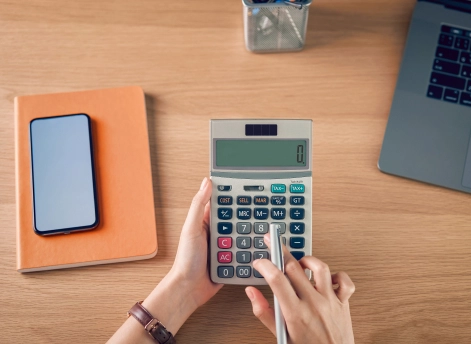Planning to buy a home but unsure how much deposit you need? Our home loan deposit and upfront cost calculator helps you estimate the deposit required for a home loan along with the upfront costs based on your property price, loan type, and lender requirements.
Whether you’re looking at a 5%, 10%, or 20% deposit, this calculator factors in additional costs like Lenders Mortgage Insurance (LMI), stamp duty and potential first-home buyer grants that could reduce your upfront expenses.
How To Calculate Home Loan Deposit?
When purchasing a property, your home loan deposit is the portion of the price you pay upfront, before your mortgage kicks in.
The basic home loan deposit is calculated as:
Deposit = Property Value − Loan Amount
This represents the cash you pay upfront toward the purchase price. To determine your total funds needed at settlement, you should also add any additional costs (like stamp duty, legal fees, conveyancing, and lender fees):
Total Upfront Outlay = (Property Value − Loan Amount) + Additional Costs
Below is a quick breakdown of each element:
Property Value – This is usually the contract price or an official valuation that the lender uses.
Loan Amount – The amount you plan to borrow. Most lenders will base this on your income, expenses, and the property’s value.
Deposit – The difference between the property value and what you borrow. It’s often best to have at least 20% of the property’s value to avoid extra charges like Lender’s Mortgage Insurance (LMI).
Additional Upfront Costs
- Stamp Duty (Transfer Duty): A tax based on your property’s purchase price and your state or territory.
- Legal/Conveyancing Fees: Costs for settlement and transferring the title.
- Lender’s Mortgage Insurance (LMI): If your deposit is below 20%, many lenders charge an insurance premium.
- Other Fees: Such as property inspections, loan application fees, and registration fees.
Available Funds – The total savings or cash you have for both the deposit and these upfront costs.
Make sure: Available Funds ≥ Deposit + Additional Costs
Explore Your Home Loan Options
Knowing how much you need is a good start. Get help from experts along your journey.
Talk To An ExpertFrequently Asked Questions
What Is A Home Loan Deposit?
A home loan deposit (also called a house deposit) is the initial payment you make toward the property’s purchase price. This amount reduces how much you need to borrow from the lender and can help secure better loan terms.
| Property value | 20% deposit (Total Upfront Outlay) | 5% deposit (Total Upfront Outlay) |
|---|---|---|
| $600,000 | $144,000* | $78,000 (including LMI) |
| $700,000 | $170,000 | $91,000 (including LMI) |
| $800,000 | $193,000 | $105,000 (including LMI) |
| $900,000 | $217,000 | $118,000 (including LMI) |
| $1,000,000 | $242,000 | $132,000 (including LMI) |
The calculation is based on the following:
For a 20% deposit scenario, the upfront cost includes the deposit amount, which is 20% of the property value, along with additional costs such as stamp duty, transfer fees, registration fees, and lender/legal fees. In the 5% deposit scenario, LMI is also factored in, as it is required when the deposit is less than 20%.
Note: An LMI exemption is possible for some professionals.
How Much Deposit Do You Need For A Home Loan?
How Does My Deposit Affect Borrowing Capacity and Interest Rate?
Do I Need A 20% Deposit For A Home Loan?
Can I Borrow More With a Higher Deposit Size?
Can I Get A Home Loan With No Deposit?
Can I Use A Gift From Family For My Deposit?
How Does Stamp Duty Affect My Deposit Savings?
What Are My Upfront Costs?
How Can I Save For My House Deposit Quickly?
Still need answers? We're here to help!
Ask an expertOur team of mortgage experts will assist you within 24 hours.
